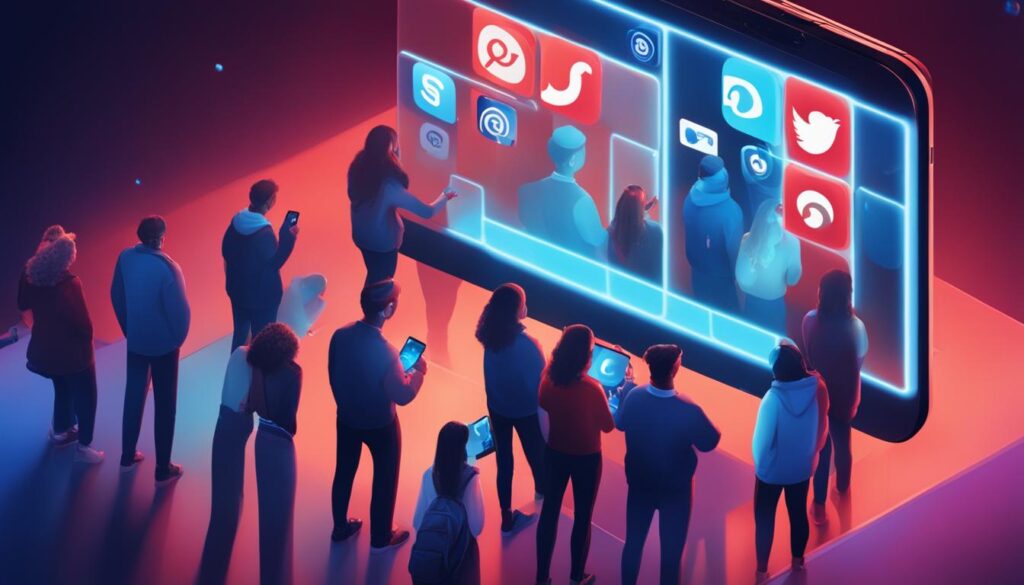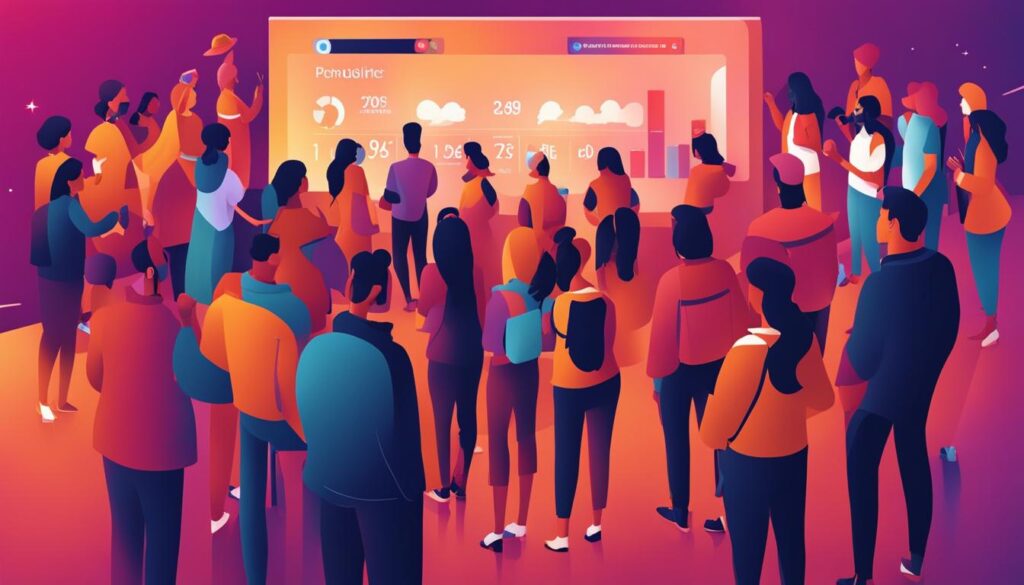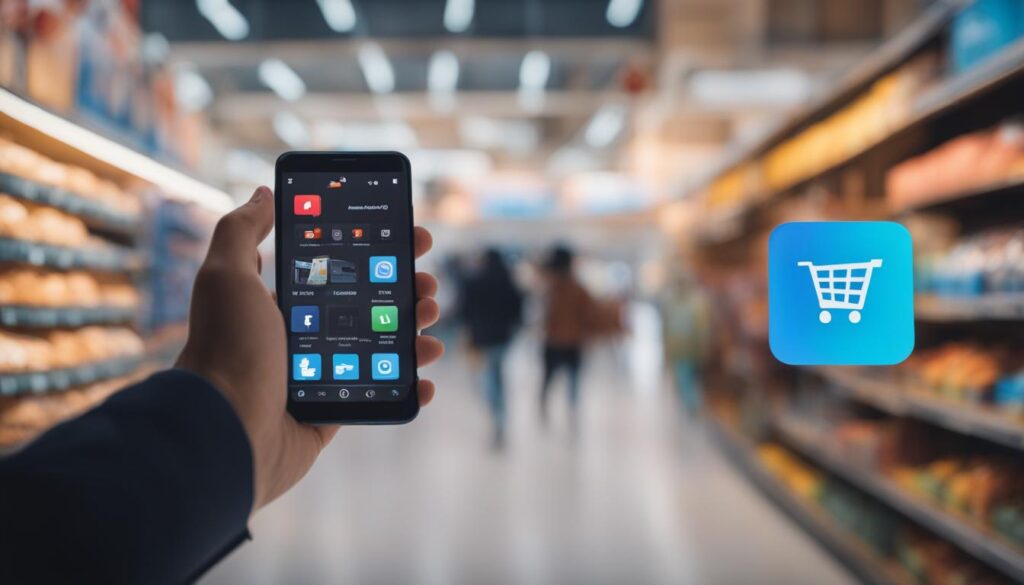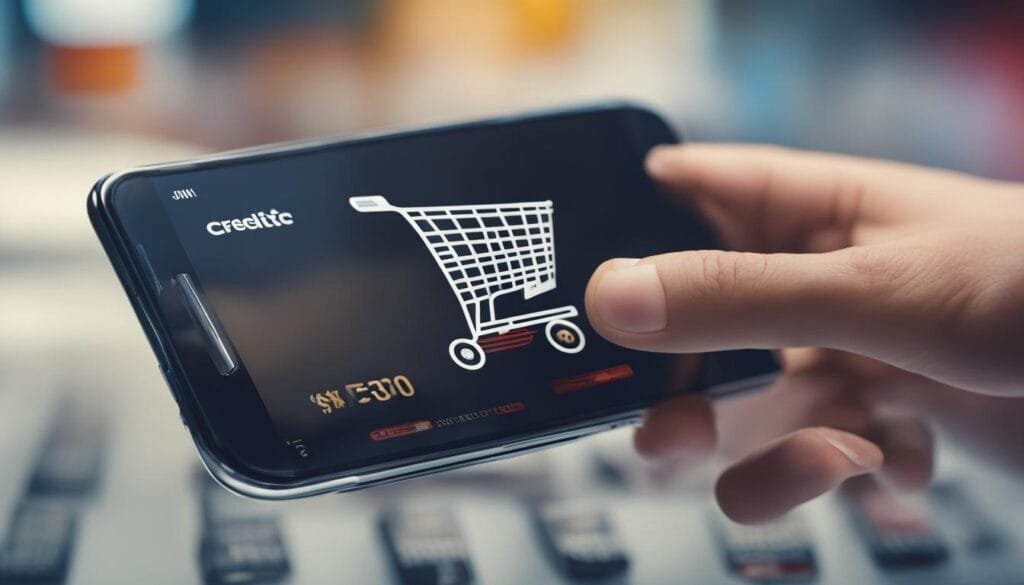Social media has become an integral part of our lives, influencing our behavior in various ways. In this article, we will explore the complex interplay between social media and economic behavior. By analyzing the factual data from various sources, we will uncover how activities such as posting, liking, and sharing on social media platforms impact consumer spending and shape financial habits. Understanding these dynamics is crucial for businesses and marketers to stay ahead in today’s digital landscape.
Key Takeaways:
- Social media has a significant influence on consumer spending patterns
- Visibility bias created by social media can lead to increased spending and decreased savings
- Social media influencers play a powerful role in driving buying trends and promoting conspicuous consumption
- Personal savings rates may decline due to the pressure to maintain an inflated lifestyle seen on social media
- Social media also shapes purchasing decisions and has fueled the rise of e-commerce and digital payments
The Impact of Social Media on Consumer Spending
Social media analysis has revealed a significant influence on consumer spending habits and financial trends. A study conducted by the University of California and University of Toronto found that people are spending more and saving less due to the visibility bias created by social media. This bias occurs because individuals tend to focus on what others are spending, rather than their own saving habits.
According to the study, this visibility bias is changing our consumption patterns and shaping our financial behaviors. As we constantly see the spending habits of others on social media platforms, we develop an inaccurate perception of our own financial position and future wealth prospects. This can lead to increased spending and decreased savings as we try to keep up with the consumption trends we see online.
These findings highlight the importance of understanding the psychology behind consumer spending in the digital age. As social media continues to dominate our lives, businesses and marketers need to adapt their strategies accordingly. By recognizing the impact of social media on consumer behavior, they can effectively engage with their target audience and navigate the evolving landscape of online commerce.
| Impact | Findings |
|---|---|
| Influence on Spending Habits | Social media visibility bias leads to increased spending and decreased savings. |
| Perception of Financial Position | Constant exposure to others’ spending habits creates an inaccurate perception of personal wealth. |
| Need for Adaptation | Businesses and marketers must understand social media’s impact to engage effectively with consumers. |
By leveraging these insights into spending psychology, businesses can tailor their marketing strategies to better resonate with their target audience. They can develop campaigns that focus on value and affordability rather than conspicuous consumption, allowing consumers to make informed decisions based on their actual needs and financial capabilities.
Additionally, individuals should be mindful of the visibility bias when using social media platforms. It’s essential to differentiate between reality and the curated online persona presented on social media. By recognizing the potential influence of social media on their own spending habits, individuals can make conscious efforts to prioritize saving and financial well-being.
The Role of Visibility Bias
Social media platforms play a significant role in magnifying the visibility bias, which has a profound impact on our saving habits and financial position. The constant exposure to others’ spending activities creates an inaccurate perception of our own financial situation and future wealth prospects. As a result, many individuals feel pressured to keep up with the consumption trends they see on social media platforms.
This visibility bias is particularly pronounced due to the nature of social media, where people showcase their spending habits and experiences. The curated highlight reels of others’ lives can lead us to believe that everyone is living a lavish lifestyle, further fueling our desire to spend rather than save. This distorted perception can have detrimental effects on personal savings rates and financial well-being.
“The curated highlight reels of others’ lives can lead us to believe that everyone is living a lavish lifestyle, further fueling our desire to spend rather than save.”
The visibility bias created by social media platforms requires us to be more mindful of our own financial goals and habits. We need to differentiate between the reality presented on social media and our own financial priorities. By consciously focusing on our personal saving goals and being aware of the influence that social media can have, we can make more informed financial decisions and cultivate healthier saving habits.
Understanding the role of visibility bias in shaping our spending behaviors is crucial for individuals and businesses alike. It highlights the importance of financial literacy and the need to promote a balanced perspective on social media. By acknowledging the distorted nature of online portrayals, we can work towards creating a society that values responsible spending and prioritizes long-term financial stability.

Social Media Influencers and the Power of Persuasion
Social media influencers play a significant role in shaping consumer behavior, particularly when it comes to conspicuous consumption and buying trends. These individuals have amassed a large following on platforms like Instagram, where they showcase their lifestyles and promote products or services through endorsements. Their influence extends beyond their own followers, as their posts create a ripple effect that influences others to follow their consumption patterns and purchasing decisions.
“I think social media has become a really important tool that people use to get information and research before they buy something.” – Mark Zuckerberg
The promotional culture of social media amplifies this trend, with many users using platforms like Instagram to document and showcase their own spending habits. This creates a sense of social proof, where individuals feel the need to conform to the consumption trends they see on social media in order to feel accepted or validated.
Marketers have recognized the power of social media influencers and have strategically partnered with them to promote their products or services. By leveraging the influence of these individuals, marketers can tap into their followers’ desires and aspirations, ultimately driving buying trends and increasing sales. The visual nature of social media platforms, combined with the persuasive power of influencers, makes for a potent combination in shaping consumer behavior and driving purchasing decisions.

The Impact of Social Media Influencers on Consumer Behavior
Research has shown that social media influencers have a profound impact on consumer behavior. A study conducted by the University of California and the University of Toronto revealed that individuals are more likely to make purchasing decisions based on the recommendations of social media influencers than traditional advertising. This highlights the power of personal recommendations and the influence that social media personalities have on their followers.
| Influencer | Number of Followers | Engagement Rate |
|---|---|---|
| @FashionGuru | 1.2 million | 5.8% |
| @BeautyQueen | 800k | 4.2% |
| @FitnessFreak | 1.5 million | 6.3% |
The table above showcases the reach and engagement of popular social media influencers in different niches. These influencers have a significant following and high engagement rates, making them valuable partners for brands looking to reach a specific target audience.
The Future of Social Media Influencer Marketing
As social media continues to evolve, so does the role of influencers in shaping consumer behavior. With the rise of new platforms and the emergence of micro-influencers, who have smaller but highly engaged audiences, influencer marketing is becoming more targeted and personalized. Brands are also exploring collaborations with virtual influencers, AI-generated personalities that can provide unique marketing opportunities.
- Increased focus on authenticity: Consumers value authenticity and are becoming more discerning when it comes to influencer partnerships. Brands need to ensure that their collaborations appear genuine and align with their target audience’s values and interests.
- Micro-influencer marketing: Brands are recognizing the value of working with micro-influencers who have a smaller but highly engaged following. These influencers tend to have a more niche audience and can provide a more targeted reach.
- AI-generated influencers: Virtual influencers have gained popularity in recent years, offering unique opportunities for brands to create and control their own virtual brand ambassadors. These AI-generated personalities can be tailored to fit specific brand messages and aesthetics.
As the world becomes increasingly connected through social media platforms, the power of influencers in shaping consumer behavior will only continue to grow. Brands that understand the influence of social media influencers and adapt their marketing strategies accordingly will be well-positioned to engage with their target audience and drive buying trends.
The Relationship between Social Media and Personal Savings
Social media’s influence extends beyond shaping consumer spending habits and financial trends. It also has a significant impact on personal savings and individuals’ financial outlook. As people are exposed to the consumption habits of others on social media, they may feel the pressure to maintain an inflated lifestyle and spend more than they save. This can lead to a decrease in personal savings, even as personal debt continues to rise. It is crucial for individuals to be aware of this visibility bias and make conscious efforts to differentiate between reality and the social media bubble.
The constant exposure to others’ spending habits creates an inaccurate perception of our own financial position and future wealth prospects. It creates a desire to keep up with the consumption trends seen on social media, often leading to overspending and neglecting savings. As a result, people find themselves trapped in a cycle of inflated lifestyles and financial stress. Understanding the relationship between social media and personal savings is essential for individuals to take control of their finances and make informed decisions about spending and saving.
The Impact of Inflated Lifestyles on Financial Habits
“Social media has created a culture of comparison and competition, where people feel the need to showcase an idealized version of their lives. This constant pressure to project a perfect image often leads to increased spending and a disregard for personal savings.”
– Financial expert
The prevalence of social media influencers and the promotion of conspicuous consumption further reinforce the pressure to conform to the consumption trends seen on social media. People are influenced by the experiences and endorsements of social media influencers when making purchasing decisions. This culture of “keeping up with the Joneses” can have detrimental effects on personal finances, as individuals strive to maintain an image of wealth and success.
To break free from this cycle of inflated lifestyles and financial strain, individuals need to develop a realistic understanding of their own financial situation and priorities. It is important to set clear financial goals, create a budget, and make conscious choices about spending and saving. By being mindful of the influence of social media and the visibility bias it creates, individuals can take control of their financial future and build a solid foundation of personal savings.
| Impact of Social Media on Personal Savings | Key Takeaways |
|---|---|
| Increased exposure to others’ spending habits |
|
| Pressure to conform to consumption trends |
|
| Importance of realistic financial understanding |
|
The Influence of Social Media on Purchasing Decisions
Social media has revolutionized the way consumers make purchasing decisions. With the rise of platforms like Instagram, people now turn to social media for inspiration and ideas when considering a purchase. They rely on social proof and the experiences shared by others to guide their choices. This shift in consumer behavior has had a significant impact on purchasing power and the overall consumer landscape.

One of the key drivers of this change is the proliferation of online shopping. With the convenience and variety offered by e-commerce, consumers are increasingly opting to make their purchases online. This shift in shopping habits has been further fuelled by the adoption of digital payment methods, which have made online transactions easier, faster, and more secure. As a result, the online marketplace has seen a significant increase in new customers, as well as a rise in digital payments.
“Social media has become an integral part of our lives and has a significant influence on consumer behavior. By showcasing products and sharing personal experiences, social media influencers have the power to shape purchasing decisions and drive buying trends.” – Marketing Expert
Furthermore, the promotional culture of social media has played a vital role in influencing consumer behavior. Social media influencers, with their large followings and engaging content, have become powerful trendsetters. Through their posts and endorsements, they create a domino effect, influencing others to follow their consumption patterns. This has led to a rise in conspicuous consumption, as individuals strive to keep up with the latest trends and showcase their spending habits on social media platforms.
The Impact of Social Media on Online Grocery Shopping
One area where the impact of social media on purchasing decisions is particularly evident is online grocery shopping. As consumers increasingly rely on online platforms for their grocery needs, social media plays a crucial role in shaping their choices. Online grocery stores use targeted advertisements and sponsored content on social media platforms to reach their target audience effectively. This targeted marketing, combined with the influence of social media influencers, has led to a significant increase in online grocery purchases.
The Need for Segmentation and Adaptation in Marketing
In today’s digital age, the relationship between social media and economic behavior is becoming increasingly complex. As social media continues to evolve and shape consumer behavior, it is crucial for marketers to understand and adapt to these changes in order to effectively engage with their target audience.
One key strategy for navigating this landscape is market segmentation. By dividing the target market into distinct groups based on shared characteristics and preferences, marketers can tailor their messaging and offerings to better resonate with each segment. This approach allows for more personalized and targeted marketing campaigns, resulting in higher conversion rates and customer satisfaction.
Market segmentation also provides valuable consumer insights, helping marketers gain a deeper understanding of their target audience. By analyzing data on consumer behaviors, preferences, and purchasing patterns, marketers can uncover valuable insights that inform their decision-making process. These insights can help identify emerging trends, understand customer needs and motivations, and uncover untapped market opportunities.
Another important aspect of marketing adaptation in the digital age is recognizing the impact of economic cyclicality. Economic conditions can fluctuate, affecting consumer spending habits and priorities. Marketers need to be agile and adaptable, adjusting their strategies to align with the economic climate. By staying attuned to market trends and economic indicators, marketers can make informed decisions about pricing, promotions, and product offerings to maximize their marketing effectiveness.
| Market Segmentation Benefits | Consumer Insights | Economic Adaptation |
|---|---|---|
|
|
|
In summary, market segmentation and adaptation are essential in today’s digital landscape. By leveraging segmentation strategies, marketers can personalize their approach and gain valuable consumer insights, leading to more effective marketing campaigns. Additionally, adapting to economic cyclicality ensures that marketing efforts remain relevant and aligned with changing economic conditions. By understanding the impact of social media on consumer behavior and harnessing the power of segmentation and adaptation, marketers can navigate the dynamic digital landscape and drive business success.
Conclusion
In conclusion, social media has become a powerful force in shaping economic behavior, influencing consumer spending habits and financial trends. The visibility bias created by social media platforms has magnified the pressure to conform to consumption trends, leading to increased spending and decreased savings. It is crucial for businesses and marketers to understand these dynamics and adapt their strategies to effectively engage with consumers in today’s digital age.
By harnessing the power of social media and understanding its impact on consumer behavior, businesses can thrive in a highly competitive market. Marketers need to sharpen their market segmentation strategies and gain deep consumer insights to navigate the complex relationship between social media and economic behavior. This includes revisiting the economics of loyalty, increasing marketing effectiveness, and organizing and optimizing for economic cyclicality.
Staying ahead in today’s dynamic digital landscape requires a comprehensive understanding of changing consumer behaviors and trends. With the right approach, businesses can leverage social media to their advantage, connecting with consumers and driving growth. By recognizing the influence of social media on consumer spending and financial habits, organizations can adapt their strategies and stay relevant in an ever-changing market.
FAQ
How does social media impact consumer spending?
Social media influences consumer spending patterns by creating a visibility bias, where people tend to see what others are spending rather than their saving habits. This can lead to increased spending and decreased savings.
How do social media influencers affect buying trends?
Social media influencers have become powerful trendsetters, driving buying trends and promoting conspicuous consumption. Through their posts and endorsements, they create a domino effect, influencing others to follow their consumption patterns.
Can social media influence personal savings rates?
Yes, studies have shown that social media’s visibility bias and the pressure to conform to consumption trends can lead to a decline in personal savings rates. People may feel the need to maintain an inflated lifestyle and spend more than they save.
How does social media shape purchasing decisions?
Social media plays a significant role in shaping purchasing decisions by providing inspiration and ideas through platforms like Instagram. People rely on social proof and the experiences shared by others to guide their choices.
How can marketers adapt to the impact of social media on consumer behavior?
Marketers can adapt by sharpening their market segmentation strategies, gaining deep consumer insights, and understanding the impact of social media on consumer behavior. This will help them optimize their marketing effectiveness and adapt to changing trends.
What is the overall impact of social media on economic behavior?
Social media has a profound influence on economic behavior, shaping consumer spending habits and financial trends. Understanding these dynamics is crucial for businesses and marketers to navigate the digital landscape and engage with consumers effectively.
What Are the Factors That Influence Charitable Giving on Social Media?
The influence of social media on charitable giving is undeniable. Factors that impact this include the emotional appeal of campaigns, ease of sharing and donating through social platforms, engagement with influencers, and transparency in showcasing the impact of contributions. Harnessing these factors can maximize the potential for charitable giving on social media and drive positive change in society.
Source Links
- https://www.linkedin.com/posts/linseyloy_council-post-decoding-economic-data-the-activity-7089647354856775680-1chh
- https://brandequity.economictimes.indiatimes.com/news/industry/decoding-consumer-behavior-during-pandemic/78098256
- https://www.bbc.com/worklife/article/20190320-decoding-the-bias-that-makes-us-spend-and-not-save


Pingback: Double Tap Into Debt: How Social Media Can Lead to Overspending! – Straight Fire Money